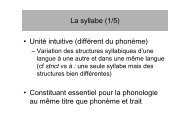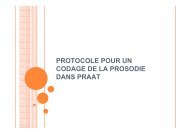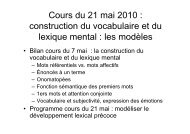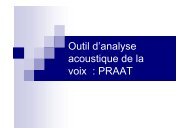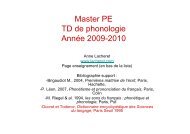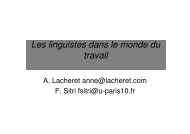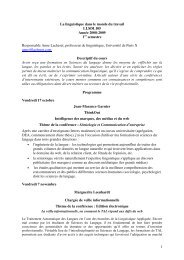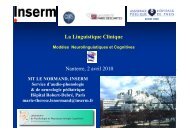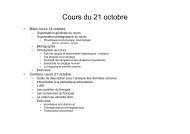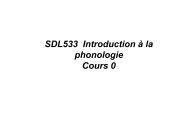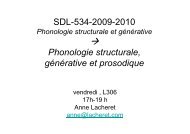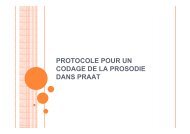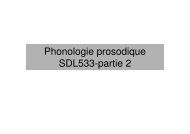Create successful ePaper yourself
Turn your PDF publications into a flip-book with our unique Google optimized e-Paper software.
it by other lawful measures. For the remainder of the opera the Count’s exterior voice<br />
will betray him, and "Vedrò" marks the apex of his power in the film. Interior singing,<br />
or an absent voice, may be all that is possible for an outmoded figure, and if so he is a<br />
functional mute. But our omniscient point-of-audition reveals that his power is still a<br />
force to be reckoned with.<br />
Time<br />
In the opera in general, the archaic nature of the Count renders him frozen in<br />
time. Mozart’s music of "Vedrò" brings out this quality beautifully, with Baroque<br />
mannerisms and other curious features. The Count cannot find a workable musical<br />
language. Suspended, he cannot move forward or back. In the film the interior voice<br />
intensifies the feeling of suspension and arrests time by extending the psychology of<br />
one or two moments. The voice freezes image and plot, and the freed-up dramatic time<br />
is available for an intense interplay of subjectivities. Figaro is mute and motionless,<br />
and the Count functionally silent, but by the end we know much more about their<br />
relationship.<br />
Arias in general tend to arrest time as they interrupt the forward progress of the<br />
drama so that a character, usually alone, can express emotion. An interior voice is<br />
suited to this situation, as Ponnelle shows in the first part of the Countess’s aria,<br />
"Dove sono." But how does an interior voice affect time in a public setting, as in<br />
"Vedrò"? As we know, in the film several places in ensembles are rendered as interior<br />
singing—mostly places that humanize the drama through asides or personal reactions<br />
amid group interaction, and that counteract the linearity of Mozart’s dramaturgy. Thus<br />
one can consider Ponnelle’s "Vedrò" an aria that functions like an ensemble because it<br />
resembles an extended aside: a long reaction, amid others.<br />
The scene generates great tension. One reason is that many markers of normal<br />
narrative are missing. Besides no moving lips, there is no outside noise—no reactions<br />
from other characters. The interior voice divides: the Count is animated by it, while<br />
the others have no awareness of it and seem inanimate. This creates an interesting<br />
dissonance as the Count and others function at different speeds. This confuses the<br />
sense of time in the scene. Yet the interior voice facilitates mediation because of its<br />
close connection with the gaze. The reciprocal gaze between the two men helps to<br />
erase time and neutralize the impact of the voice and its associated powers on them. In<br />
this way the camera lessens the gap between the audiovisual makeup of the Count and<br />
Figaro.<br />
For the courtroom spectators the spectacle is mime in suspended time. For<br />
Ponnelle the effect marks another return to the theater and the opera’s source. The<br />
scene is thoroughly cinematic, however, and the interior voice provides the link<br />
between the art forms. This is ironic, because operatic music is thought to work<br />
against the needs of cinema in opera film. All in all, in "Vedrò" the interior voice<br />
redefines the meanings of public and private, and the ways in which time and image<br />
craft character, persona, and agency.<br />
2. "Non so più"<br />
Cherubino’s aria "Non so più" wonders about the fundamental question of<br />
identity, who am I? This isn’t too surprising, as Cherubino is a budding teenage male<br />
sung by a woman. He has yearnng desires for the Countess, and any woman. The text<br />
of "Non so più," which follows Beaumarchais closely, is reflexive, for it holds up a<br />
70



